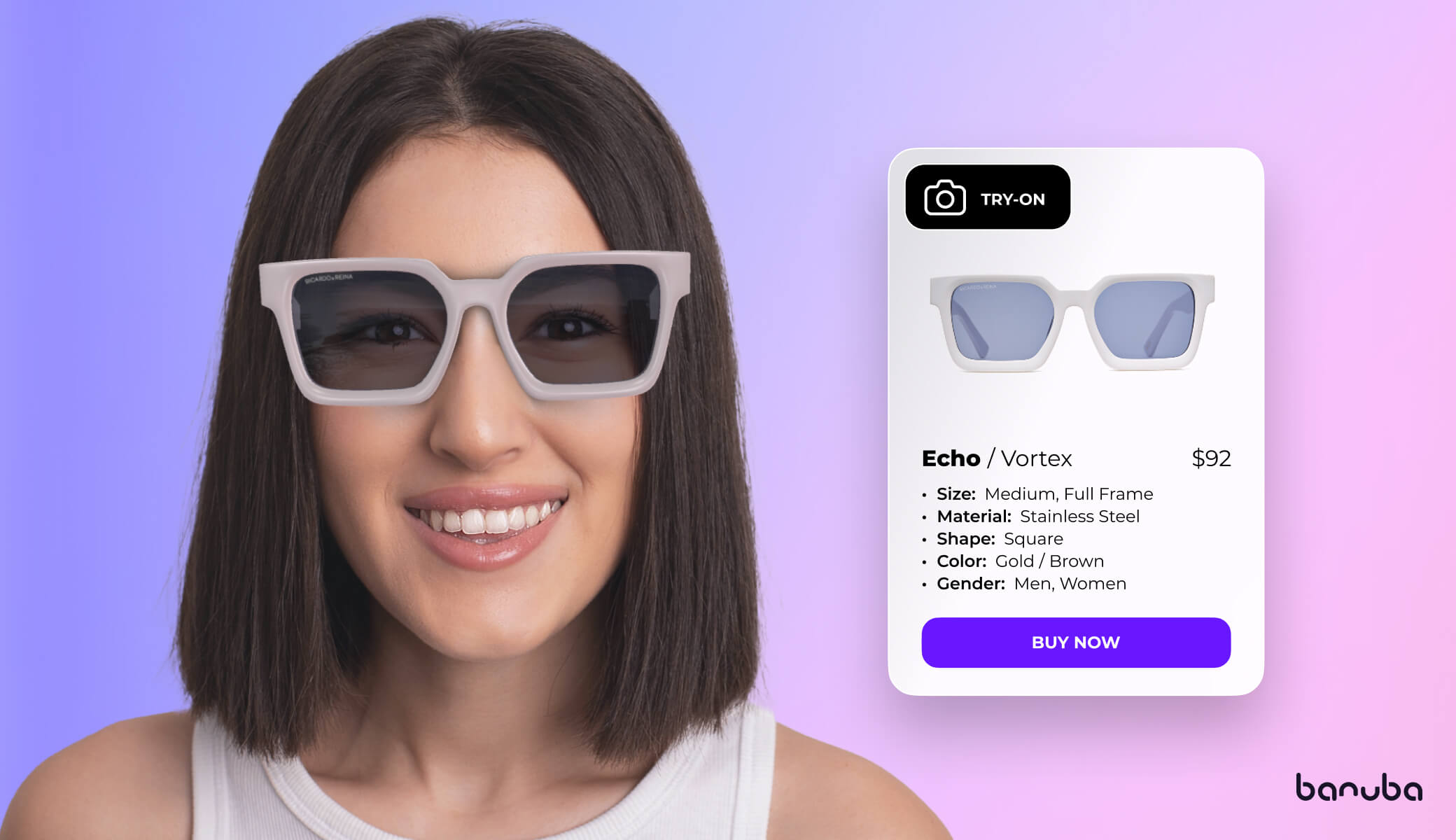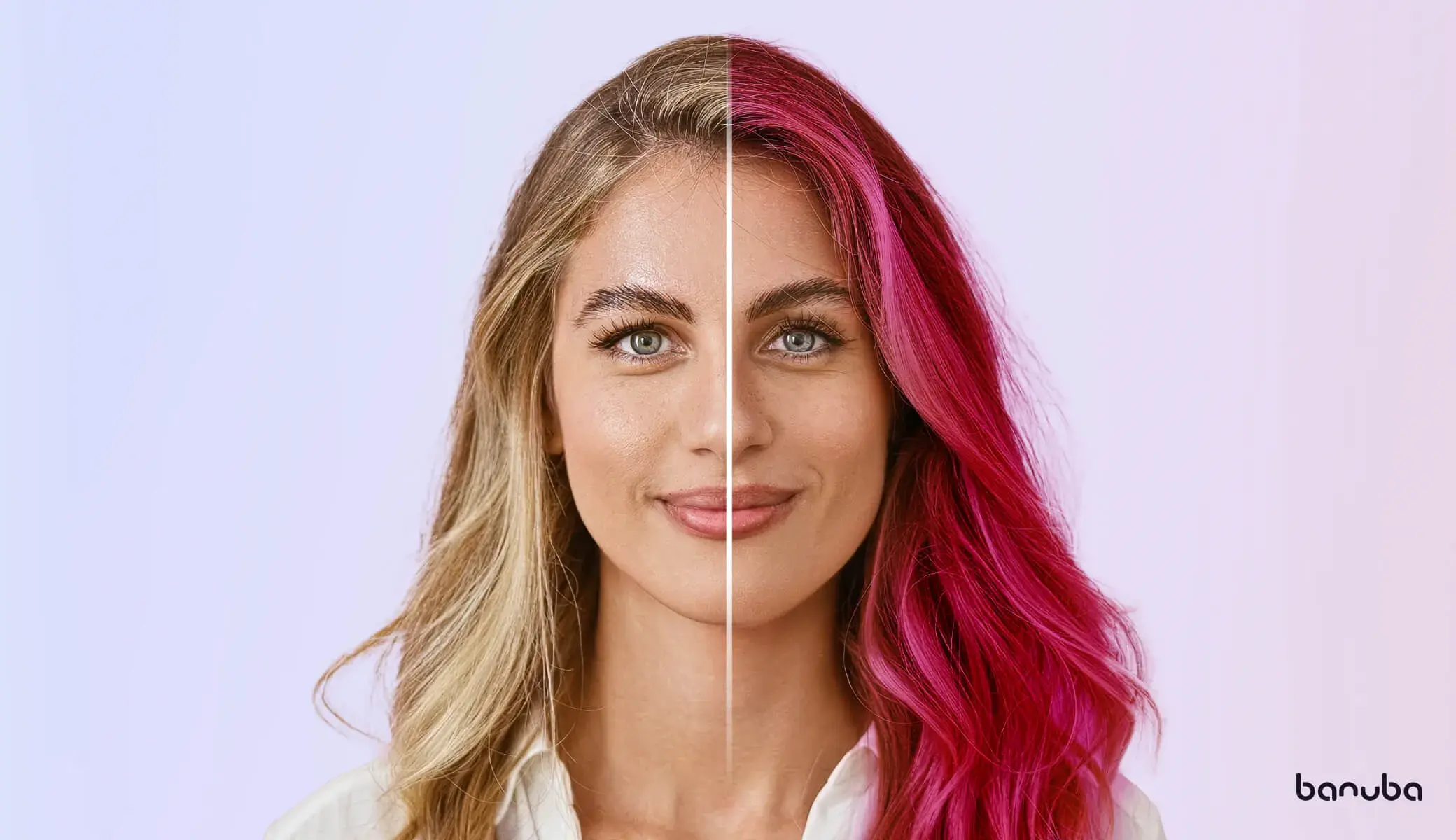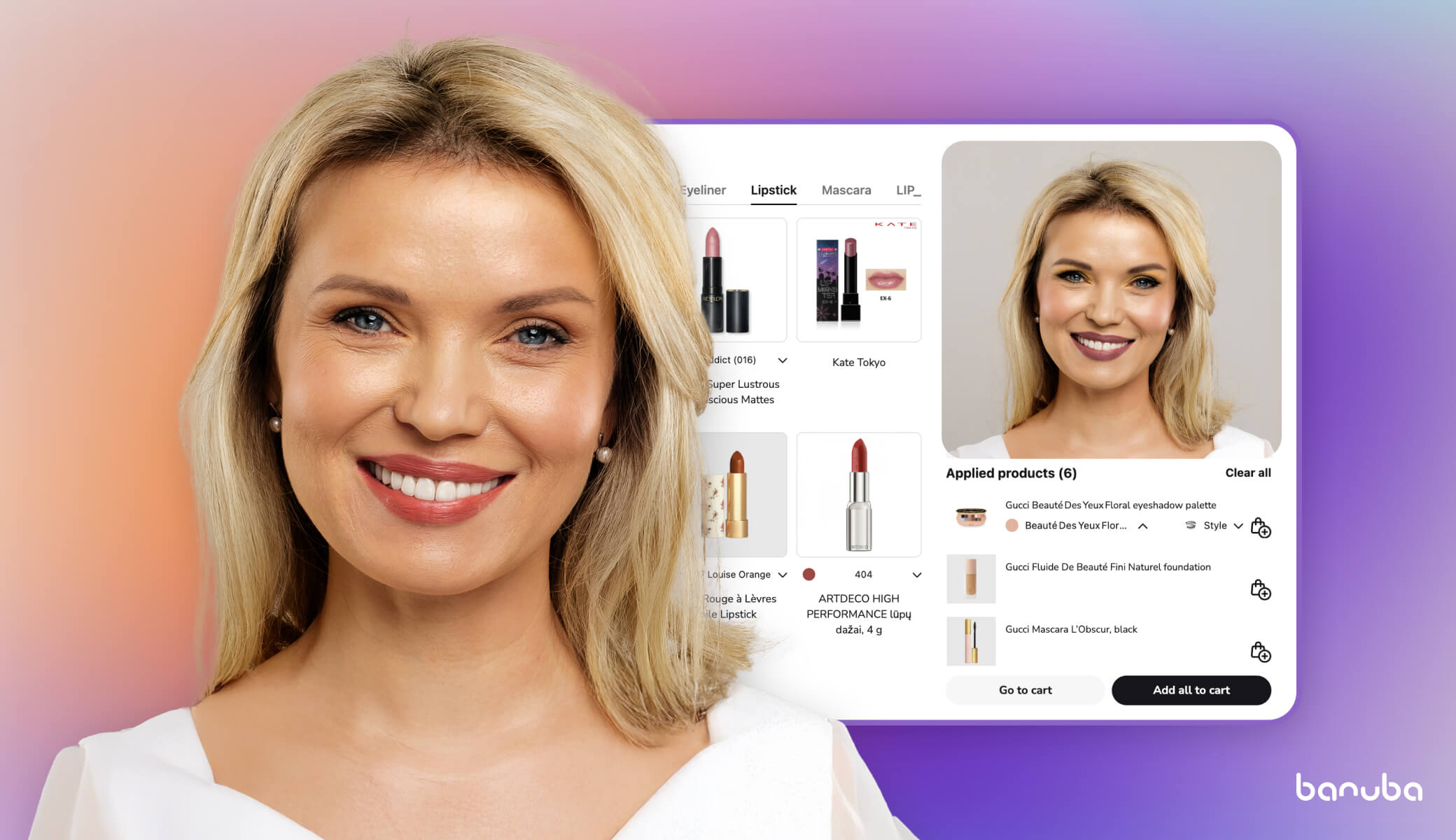[navigation]
TL;DR:
- Online eyewear market is growing, with its share surpassing 19% of the total glasses sales. Moreover, online shoppers typically buy more items at the same time and recommend the e-shops more often;
- Direct-to-consumer (DTC) brands and virtual try-on are the major trends in the industry;
- Online eyewear try-on can increase conversions by up to 94% and decrease returns by up to 60.
Brief Eyewear Market Overview
Before matching you with the win-win eCommerce solution for opticians, let's examine the state of the industry in 2024. I've gathered some statistics that reflect the general picture.

According to Statista, the eyewear market revenue in 2024 is $146.20 billion, and by 2029, the market volume will be 10.2 billion pieces. Today, each person generates an average revenue of $18.87 in the eyewear industry.
In 2019, the share of online sales revenue jumped from 11% to almost 19% (Hello, COVID-19, and no, we didn't miss a thing). According to the Online Vision Council report, online shoppers typically buy several pairs of prescription glasses, reading glasses, and sunglasses more than in physical stores. More importantly, these people will likely recommend this online optical store to friends rather than a traditional brick-and-mortar store where they would buy in person.
Ignoring changes in your target audience and their needs is your biggest mistake. According to the WHO, about 2.2 billion people worldwide have vision problems. The diseases are getting “younger” — most people with vision problems start wearing glasses between 18 and 21. The lion's share of potential buyers is changing from boomers and Gen X to zoomers and millennials. The latter make up 45% of the entire consumer group.
The pandemic has taught people to take better care of their health and well-being, but the lockdown and the transition to remote employment accompanied by screens have led to the emergence of Computer Vision Syndrome. After 2019, the need for blue light-blocking glasses increased by 40%. Still, we all want to look stylish at work, so we turn even prescription glasses into a fashion statement.
While prescription eyeglasses hold the largest market share, sunglasses account for 30%. The luxury eyewear market will continue to grow at a 1.77% CAGR until 2028. Buyers have become more concerned about sustainability and design trends.

2024 Optical Trends and Shifts
When you search for trends in the eyewear industry, Google will tell you about cat-shaped glasses and frame colors. That's fascinating, but we are trying to build successful eCommerce for opticians here. Therefore, I saved you time and found two factors, aka trends, that you should pay attention to.

DTC Brands Rule!
Bye-bye, EssilorLuxottica, with your monopoly and 30.3% of the market share. Owning over 9.1k retail spots and manufacturing eyewear for 22 renowned designer labels like Prada, Miu Miu, and Versace, it’s losing its game to groundbreaking DTC brands like Warby Parker, Zenni, and Hubble. DTC (direct-to-consumer) brands sell products directly to customers online, cutting out traditional retail intermediaries.
This trend emerged because people were tired of retail giants' monopolies, which dictated inflated prices. More than 60% of shoppers say that DTC brands offer a more personalized approach, and 68% believe they have higher-quality products.
Eyeglasses Virtual Try-on
It seems that it will soon be considered a cliché to blame everything on COVID-19, but you can't fight reality. In 2024, the virtual try-on market was measured at $9.17 billion, with the prospect of growing at a CAGR of 26.4% by 2030.
Tech-savvy millennials and Generation Z were waiting for glasses digitalization. And I'm among them because I'm tired of returning pieces that sit perfectly on models but not on me.
eCommerce Solutions for Opticians
To save you time, I have selected and tested eyewear eCommerce software for you. Sit back, and let's choose the best option for optical eCommerce.
Wix
Using Online Opticians Wix feels like a breath of fresh air. Its drag-and-drop builder is incredibly intuitive, making creating a visually appealing website without prior design experience easy. For an optician, Wix eCommerce offers a range of customizable templates that can be tailored to showcase eyewear products effectively. Integrating various apps allows you to add features like appointment booking, which is particularly useful if you offer eye exams or consultations.
However, as your business grows, Wix may feel limited. While it's perfect for small to medium-sized stores, the need for advanced eCommerce features and scalability could become a concern. Still, for opticians starting out, Wix provides a user-friendly experience with enough flexibility to create a functional online store.

WooCommerce
The experience is highly customizable—if you’re comfortable with WordPress, Online Opticians WooCommerce feels like a natural extension. For opticians, this means you can create a highly personalized online store with specialized product pages, filters for lens types, and even virtual try-ons if you integrate the right plugins.
However, this flexibility comes with a learning curve. You must be ready to dive into the technical aspects or hire a developer. Additionally, while WooCommerce is free, premium plugins, themes, and hosting costs can add up. Yet, the ability to create a unique and tailored customer experience makes WooCommerce a compelling choice for opticians who want to stand out.
Shopify
Shopify is the platform where ease of use meets powerful eCommerce capabilities. Setting up a store with Online Opticians Shopify is straightforward, and it’s particularly well-suited for opticians who want to get online quickly without sacrificing functionality. The platform’s robust inventory management system makes managing different product variations, like lens prescriptions and frame colors, easy, and its integrated payment gateway simplifies the checkout process.
In Shopify’s extensive app store, you can find features like AR try-ons or virtual consultations. The downside? Shopify’s pricing can be higher than that of some competitors, especially when you factor in the cost of apps and transaction fees. Nevertheless, the seamless user experience and strong customer support make Shopify a solid choice for opticians of all sizes.
Magento
Online Opticians Magento feels like the heavyweight champion of eCommerce platforms—powerful but not for the faint of heart. This incredibly robust and scalable platform makes it ideal for larger optician practices or businesses with complex needs. Magento’s open-source nature allows for deep customization, which means you can build a truly unique online experience, including advanced product configurations, customer accounts, and detailed analytics.
However, using Magento requires a significant investment in both time and resources. The platform’s complexity means you’ll likely need a dedicated development team to handle everything from setup to ongoing maintenance. But if you’re an optician with a vision for a large-scale, feature-rich online store, Magento offers unparalleled potential.
Virtual Try-on Technology for Opticians
If you want to stand out from competitors, just creating an online store with eCommerse software for opticians will not be enough. Did you know that 61% of shoppers would rather choose brands that use augmented reality? At the same time, Shopify claims that AR increases conversions by up to 94%.
As an example, I'll describe the benefits of implementing virtual try-on technology for opticians’ eCommerce with TINT.
- Banuba's product is versatile and operates on mobile and the web, supporting iOS, Android, Mac, Unity, and all the eCommerce platforms listed above;
- Precise item placement thanks to the patented face-tracking technology with 3.308 vertices;
- Realistic looks, adapting to lighting, motion, and gravity;
- Fast integration into your existing or new website or application.
You integrate TINT into eCommerce for online opticians while we quickly do eyewear digitization. What will it look like for the customer?
Each potential buyer can try on all available models, even on a low-end camera (because we improve the image). By the way, virtual try-on increases engagement rate by 200%. Proven by me, who got so engaged that I had to move the deadline for this article. They can add products to the cart from the virtual fitting room or a product card, and we will offer even more suitable options based on their choice.
But let's start drawing outside the lines. What other optical marketing ideas can virtual try-on help implement for opticians’ eCommerce?
- emailing a new digital collection with the ability to try on glasses online before they hit the shelves?
- integrating with social media filters?
- installing eyeglasses virtual try-on booths in malls?
- collaborating with influencers and adding a new promotional campaign form that meets sustainability principles?
Brainstorm about this, and don't limit your imagination. Considering that our analytics say TINT reduces return rates by 60%, high ROI is not a long wait.
Want to explore more solutions? We have a selection of virtual try-on apps for glasses and eyewear.
Conclusion
So, let's recap the happiness and success formula for digital migration in the eyewear industry. Choose a matching eCommerce for online opticians, add augmented reality for eyewear retailers, season with creative marketing and communication campaigns, and you'll get high ROI and loyal customers. Ready to get started now?









